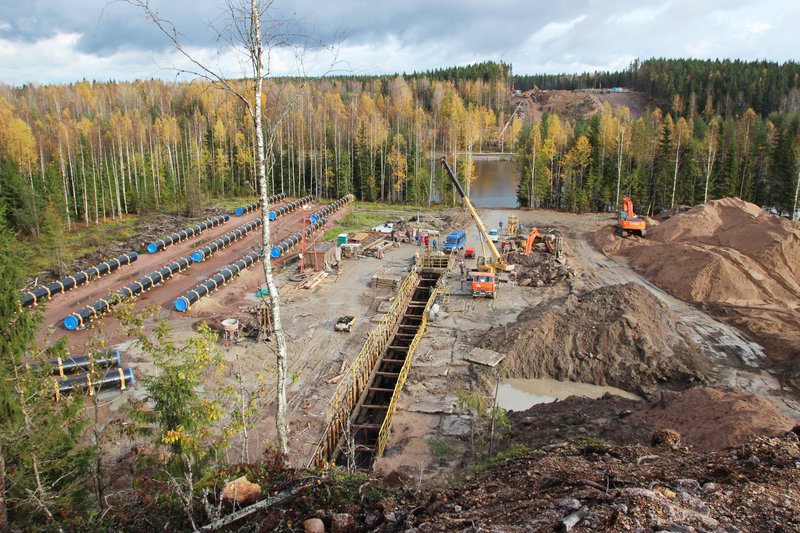In the coming years, you’ll hear a lot more talk about hydrogen as a way of tackling the climate crisis. Right now, governments across the world are weighing up how much of a role it will play in our future energy mix.
Technologies already exist that could switch parts of our energy system from fossil fuels to hydrogen. Hydrogen emits only water at the point of consumption, not climate-wrecking CO2, so it’s being talked up as a way of helping to solve the climate emergency.
Sounds good, right? So what’s the catch?
A major problem is that fossil fuel companies want to produce a certain type of hydrogen, which they are calling ‘blue hydrogen’, but is otherwise known as fossil hydrogen.
This is made by converting fossil gas – the fuel we use to heat our homes, cook food and produce electricity – into hydrogen.
Because it uses fossil gas, this way of making hydrogen does emit large volumes of CO2.
Carbon capture: too little, too late
But don’t worry, say fossil fuel companies. Carbon capture and storage (CCS) facilities will be built to make sure this CO2 gets buried in the ground and never reaches the atmosphere.
What companies are less keen to mention, however, is that CCS is a costly technology that is unlikely to scale up in time to prevent climate breakdown.
CCS has received billions of dollars in subsidies since the first pilot projects began in the mid-1990s. Yet, even with this long-term support, there hasn’t been any significant progress towards widespread, commercial-scale adoption of CCS.
Even CCS advocates admit it’s woefully off track. One recent study by the CCS industry, for example, warns that global CCS capacity needs to increase by a factor of 35 by 2030 to stay in line with what it thinks is necessary to deliver the Paris Agreement.
Given the six-to-10 year lead time for CCS projects and the historically glacial pace of progress, this is an extremely tall order.
Another concern is that, when applied to the most common way of making fossil hydrogen, CCS can capture less than 60% of the emissions produced. This could be increased to around 90%, but at much greater cost.
Even if carbon capture rates improve over time, this means that large-scale deployment of fossil hydrogen would result in millions of tonnes of CO2 being dumped into the atmosphere.
And, even if CCS worked perfectly, greenhouse gas emissions from the production and transportation of fossil gas, before it’s converted into hydrogen, would continue to be a major contributor to overall emissions.
This flies in the face of claims that fossil hydrogen is a ‘low carbon’ fuel. The reality, more like, is that it’s not compatible with a carbon-neutral economy.
Critically, CCS means business as usual for burning fossil fuels while distracting from cheaper, safer and faster options for energy efficiency, renewables and electrification, which need to be at the heart of the energy transition.

The gas trap
As with the process for producing fossil hydrogen, the infrastructure for transporting it also risks locking in dependence on fossil gas.
Aided by tens of billions in public subsidies, gas companies want to make large-scale investments that will repurpose existing gas pipelines, storage facilities and import terminals for hydrogen, as well as build new hydrogen infrastructure from scratch.
Initially, the infrastructure would be used to supply fossil hydrogen. Then at some point in future, industry argues, it would switch to delivering what it claims are more sustainable types of gas, largely in the form of renewable hydrogen, or ‘green hydrogen’ as the industry likes to call it.
But renewable hydrogen is a decade or more from commercial viability, and even then will be a scarce resource that needs careful targeting to sectors that cannot use other, more plentiful sources of clean energy.
Indeed, credible estimates show that there won’t be anywhere near enough renewable hydrogen or other types of carbon-neutral gas to justify the large-scale investments in infrastructure being pushed for by industry.
The danger is that the promise of ‘fossil hydrogen now, renewable hydrogen later’ will not materialise, and that the infrastructure will continue to support the use of fossil gas for decades to come.
Blocking renewables
Fossil fuel companies have a naked interest in promoting fossil hydrogen. It relies on the continuing extraction and transportation of fossil gas, both of which they make profits from.
It also means they’d keep hold of assets worth tens of billions of dollars, like gas fields and pipelines, which might otherwise get decommissioned in the transition to clean energy.
Fossil hydrogen also keeps alive the same fossil fuel companies that are working hard to block the progress of clean energy sources that threaten to take away their business, including renewable hydrogen.
In the EU for example, Freedom of Information documents revealed that gas industry representatives lobbied against ‘over-electrification’ of the energy system in favour of gas. While in June this year, fossil fuel companies called on the European Commission to ensure that renewable hydrogen isn’t prioritised over fossil hydrogen in the Commission’s hydrogen strategy.
Worryingly, the Commission has granted fossil fuel interests undue influence over hydrogen decision-making. The Clean Hydrogen Alliance, which is overwhelmingly dominated by industry, has been tasked with establishing an investment programme to implement the Commission’s hydrogen strategy.
This includes creating a pipeline of large-scale investment projects and supporting the expansion of ‘low carbon hydrogen’, which opens the door for fossil hydrogen. Companies in the alliance could potentially get EU funding for some of these projects, which worsens what is already a stark conflict of interest.
Campaigning for a safe climate
Global Witness is working to end governments’ financial and policy support for the fossil gas industry and accelerate the transition to genuinely sustainable energy sources. This includes calling out sham solutions like ‘blue hydrogen’ for what they are: myths created by fossil fuel companies to maintain their economic interests.


